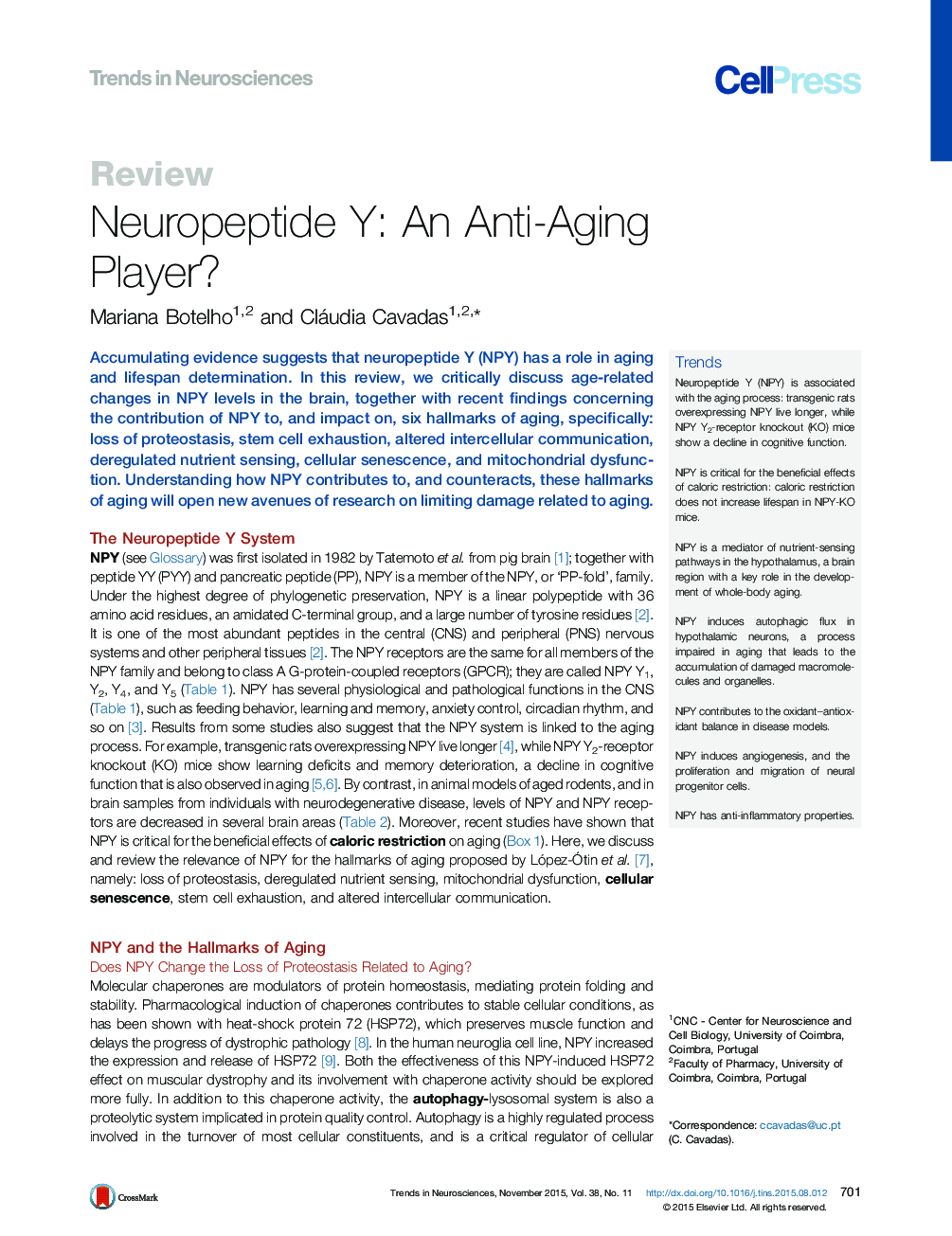| Article ID | Journal | Published Year | Pages | File Type |
|---|---|---|---|---|
| 4354246 | Trends in Neurosciences | 2015 | 11 Pages |
Accumulating evidence suggests that neuropeptide Y (NPY) has a role in aging and lifespan determination. In this review, we critically discuss age-related changes in NPY levels in the brain, together with recent findings concerning the contribution of NPY to, and impact on, six hallmarks of aging, specifically: loss of proteostasis, stem cell exhaustion, altered intercellular communication, deregulated nutrient sensing, cellular senescence, and mitochondrial dysfunction. Understanding how NPY contributes to, and counteracts, these hallmarks of aging will open new avenues of research on limiting damage related to aging.
TrendsNeuropeptide Y (NPY) is associated with the aging process: transgenic rats overexpressing NPY live longer, while NPY Y2-receptor knockout (KO) mice show a decline in cognitive function.NPY is critical for the beneficial effects of caloric restriction: caloric restriction does not increase lifespan in NPY-KO mice.NPY is a mediator of nutrient-sensing pathways in the hypothalamus, a brain region with a key role in the development of whole-body aging.NPY induces autophagic flux in hypothalamic neurons, a process impaired in aging that leads to the accumulation of damaged macromolecules and organelles.NPY contributes to the oxidant–antioxidant balance in disease models.NPY induces angiogenesis, and the proliferation and migration of neural progenitor cells.NPY has anti-inflammatory properties.
